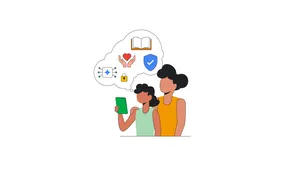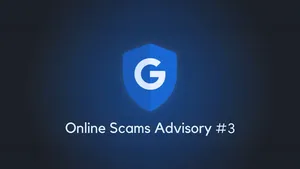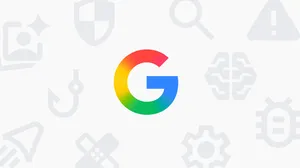Four ways to keep your nonprofit safe & secure online


Today, we’re partnering with Google’s User Advocacy Group to share four smart tips to keep your nonprofit, your users, and you safe online.
1. Secure your passwords
Many of us “know” that it’s smart to pick a strong password, but out of convenience we also continue to use our favorite pet’s name (e.g. “Clifford”) or other not-so-creative passwords like “password.” Although pets like Clifford are great, they don’t make great passwords. Rather, this weak protection creates vulnerable access to some of your nonprofit’s most sensitive information.
Picking strong passwords that are different for each of your accounts is extremely important -- it’s also good practice to update your passwords regularly. Check out the following tips:
Use a unique password for each of your accounts. Would you give a burglar a key that accessed your home, car, garage, and more? Using the same password for multiple accounts creates the same type of risk. Ensure you’re protecting your data by using unique passwords for each account.
Include numbers, letters and symbols in your password. The longer your password is, the harder it is to guess. Adding numbers, symbols and mixed-case letters makes it harder for someone to gain access to your account.
Create password recovery options and keep them up-to-date. If you forget your password or get locked out, you need a way to get back into your account. Many services will send this information to a recovery email address to reset your password, so be sure your recovery email address is up-to-date and accessible. You may also be able to add a phone number to your profile to receive a code to reset your password via text message. Having a mobile phone number on your account is one of the easiest and most reliable ways to help keep your account safe.
2. Take the security checkup
Google’s Security Checkup is a quick, easy way to review the following information about your account (and more)!
Recent activity: This is a quick overview of your recent sign-ins to Google. If you see any activity from a location or device you don’t recognize, change your password immediately.
Account permissions: These are the apps, websites, and devices connected to your Google account. Take a look and make sure you trust—and actually use—all of them. You might want to remove an old phone, or that dusty app you never use.
Check your 2-step verification: Most people have only one layer of protection with their password. 2-step verification adds an additional layer of security to your account by requiring a phone or security key to access your account information.
3. Understand your privacy settings
If you do your personal and business work on the same computer, you will want to also check your privacy settings through Google’s Privacy Checkup. Privacy Checkup allows you to control what information like photos, videos and reviews are shared to the public or to whomever you choose.
Manage your sharing: You can decide what information you want to share such as videos, photos and reviews. Perhaps your nonprofit videos are only shared with your friends, when you want them to be shared with anyone. This is a simple way to check to see who can see what.
Personalize your google experience: One additional function of privacy checkup is to see what information you’re sharing with Google. Google uses this information to provide better search results and more relevant information to get you answers quicker and more relevant information to share to your nonprofit community.
Review important information about how Google uses data to make services better for you and your nonprofit.
4. Ensure you're switching between your personal & business accounts
We understand that as a nonprofit, you wear many hats and manage multiple business accounts in addition to personal ones. Google makes it easy toggle between accounts — visit your account settings to quickly determine which data you’re accessing, and rest easy knowing your personal and business information are separate.
Guest Mode or Incognito mode: Share Chrome with other people in your organization and ensure everyone has their own settings and bookmarks. You can also utilize Guest mode or Incognito mode to open a private browsing session in Chrome without leaving browser history or cookies behind once you’ve logged out.
Using Chrome on an unfamiliar device or machine: If you’re using an unfamiliar device or machine, ensure you’ve properly logged out of your account before heading off to your next meeting.
Online security doesn’t have to be difficult. These simple steps will give you peace of mind and protect your nonprofit’s valuable work. If you have any other online security questions or want to recommend a topic for a future blog, please add a comment below.
To see if your nonprofit is eligible to participate, review the Google for Nonprofits eligibility guidelines. Google for Nonprofits offers organizations like yours access to Google tools like Gmail, Google Calendar, Google Drive, Google Ad Grants, YouTube for Nonprofits and more — all at no charge. These tools can help you reach new donors and volunteers, work more efficiently, and tell your nonprofit’s story. Learn more + enroll here.






